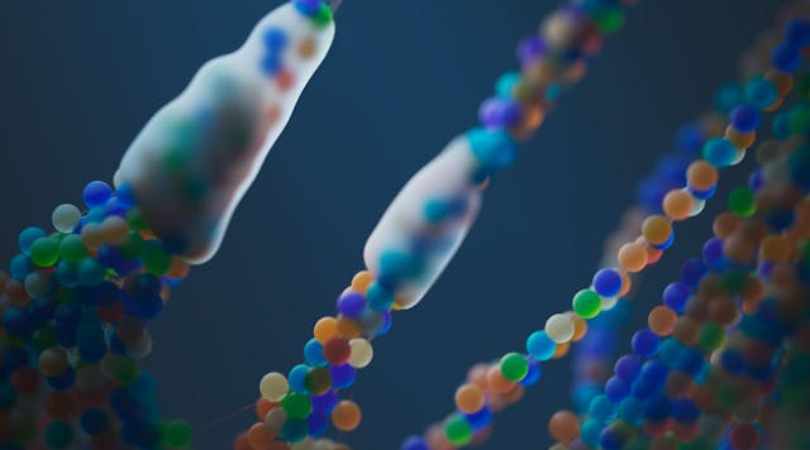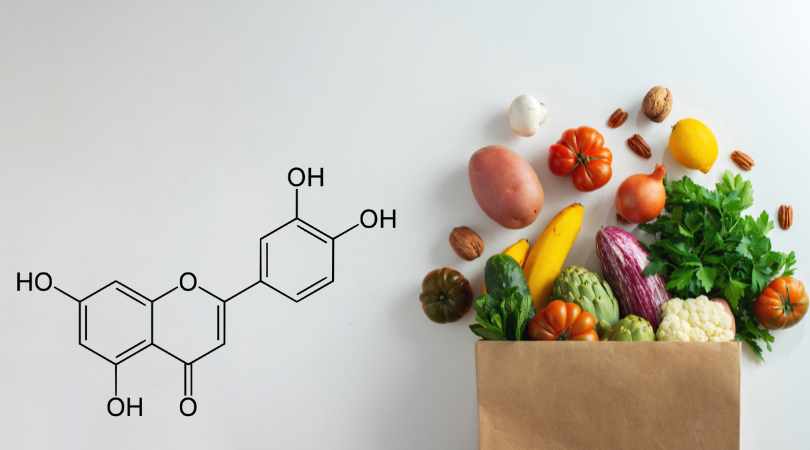Scientists have successfully restored the lost uricase enzyme, a key breakthrough in combating fructose-induced fat formation. This discovery offers new hope for preventing obesity and metabolic disorders by targeting how the body processes sugar and stores fat.
Limited Quantities Available! Order Today and Enjoy Free Shipping on Orders Over $100!
Endogenous Fructose
Fructose your body produces internally, especially during stress or high carb, salt, or alcohol intake—even without sugar consumption.
You May Be Making Fructose Without Realizing It
Endogenous fructose is your body’s own sugar—produced during stress, dehydration, and high-carb intake. And it can wreak just as much havoc as the stuff you eat.
This internal fructose production bypasses willpower and diet rules. It’s triggered by the polyol pathway and goes straight to the liver, where it sparks fat creation, uric acid, and energy collapse. That means fructose metabolism is still active—even when your diet is clean.
SugarShield is designed to support your body’s response to this silent metabolic trigger. By helping manage the consequences of fructose metabolism, it offers protection from the inside out—whether fructose comes from your plate or your physiology.
Explore SugarShieldShort definition
A process of fructose production – even without sugar consumption – inside your body that is driven by stress or high carb, salt, or alcohol intake or dehydration.
What is Endogenous Fructose?
Endogenous fructose synthesis refers to the process of internal production of fructose from glucose. To experience this process you don’t necessarily have to consume food as it can be triggered by stress, high salt intake, or dehydration. Most people merely associate fructose with table sugar (that is 50% glucose and 50% fructose) or high-fructose corn syrup, but your body can actually convert glucose – or other sugars – into fructose through a biochemical pathway known as the polyol pathway5. By activating the polyol pathway our body converts glucose to sorbitol (carbohydrate derived from sugars also known as polyol), which is then converted to fructose. That means, we can still experience metabolic dysfunctions driven by fructose metabolism even on a low-sugar or sugar-free diet2.
The activation of endogenous fructose production has been observed in a variety of tissues. For example, in the liver, brain or kidneys1. The main function of the polyol pathway is believed to contribute to the most effective energy production during high glucose concentrations. We can think of it as an alternative route from overwhelmed glycolysis. However, endogenous production contributes to fructose overconsumption, which is later metabolised to uric acid (harmful byproduct that can cause inflammation) and drive fat gain. Diabetic people are most susceptible to experience this as studies suggest that diabetes is associated with endogenous fructose synthesis
Studies suggest that blocking the production of endogenous fructose results in amelioration of harmful effects on fructose metabolism such as: decrease of uric acid production, reduced risks of non-alcoholic fatty liver disease, (NAFLD), cardiovascular problems and even potential neurological dysfunctions.
When Does Your Body Produce Fructose?
Kidneys
Inner areas of the kidneys – inner medulla and papilla – have hypertonic properties (very concentrated with salts) that might trigger the polyol mechanism8. This happens because kidney cells respond to a high hypertonic environment, which is needed to produce concentrated (not diluted) urine, with high aldose reductase converting glucose to sorbitol. Evolutionary, the induction of endogenous fructose production in the kidneys was an adaptive mechanism for the times of water scarcity. It was developed in order to protect kidneys from high salt concentration and sorbitol was produced to work as an osmolyte (organic molecule that manipulates homeostasis by changing the properties of biological fluids) to reduce cellular stress. However, in the modern diet we have access to a more varied range of foods that provide a constant supply of fructose. Since this mechanism still exists, endogenous and exogenous (external) fructose add up, which brings us to the brink of overconsumption.
A polyol pathway has been found contributing to the development of diabetic neuropathy - a kidney disease associated with high blood sugar levels (hyperglycemia)5. It happens because uncontrolled hyperglycemia and hypertension damage small vessels in kidneys and the polyol pathway further accelerates it. Diabetic neuropathy is one of the most common types of kidney disease worldwide. The common symptoms are loss of appetite, problems with urine, confusion or swelling. Emerging studies indicate endogenous fructose production as one of the major factors for developing the disease: the polyol pathway is the most active during diabetes as the expression of aldolase reductase rises with high blood glucose level. Fructose in this case works as a nephrotoxin – kidney damage causing compound and the blockage of fructose metabolism driver fructokinase significantly reduces risks of oxidative stress, inflammation and insulin resistance caused by fructose metabolism.
The Brain
Recent researches suggest that endogenous fructose is as well produced in the brain hypothalamus3. The mechanism of fructose entering the blood-brain barrier (a barrier that tightly regulates what enters and what exits the brain in order to protect it from potentially harmful compounds) is yet to be understood, but evidence suggests fructose production inside our central nervous system (CNS). Therefore, our CNS is under potential damage from fructose metabolism even out of dietary choices making endogenous fructose hidden brain damaging factor.
When Does Your Body Produce Fructose?
Endogenous fructose is part of an evolutionary "survival switch"—a mechanism that was once helpful during times of drought or famine, allowing the body to store fat, retain water, and reduce energy usage. This mechanism allowed for rapid energy processing in order to stimulate epigenetic changes and metabolic alterations promoting survival scenarios (like famine) by storing energy in fat cells. In modern conditions it can backfire: fructose activates a number of signaling pathways - a cascade of metabolic stress, particularly when fructose intake is frequent or excessive - which explain its detrimental effects on the body, especially on the liver, where it is stored and absorbed. In today's environment, where we face chronic stress, processed food, and overnutrition, this same survival switch becomes a liability. It gets flipped too easily and too often.
Common triggers for endogenous fructose production include:
- High salt intake – elevates blood osmolality, stimulating the polyol pathway;
- Alcohol – metabolized in a way that mimics fructose and can enhance its production;
- Refined carbohydrates – elevate blood glucose, feeding into the pathway;
- Dehydration – signals the body to conserve resources by activating this pathway;
- Chronic stress – can raise cortisol and oxidative stress, indirectly triggering the switch;
- Hyperglycemia – elevated levels of blood glucose, excess glucose enters the polyol pathway and converts to fructose via sorbitol, a common cause of diabetes.
Even if your diet is sugar-free, these triggers can keep fructose metabolism active behind the scenes. At Liv3 Health we aim to address the complex relationship between fructose production and consumption, metabolic health, and overall well-being, with the goal of finding ways to mitigate potential risks and promote healthier dietary choices through SugarShield.
The Hidden Danger on a “Clean” Diet
People often wonder why they still feel inflamed, tired, or metabolically stuck despite giving up sugar. In the modern diet we do not consume pure fructose, most of the time it comes together with other carbohydrates. In this case, any food that contributes to raised levels of glucose have high chances of inducing a polyol pathway. The problem is not only in food choices, but in manufacturing and lifestyle.
The answer may lie in endogenous fructose. It's like having a hidden sugar faucet turned on inside your body – converting fuel into fat, creating uric acid, and stressing your mitochondria with each spin of the cycle.
Endogenous fructose has been linked to the pathogenesis of:
- Obesity;
- Fatty liver (NAFLD & NASH);
- Type 2 diabetes;
- Gout;
- Hypertension;
- Neurological dysfunction (e.g. Alzheimer's disease);
- Cardiovascular issues;
- Certain cancers.
This makes it a key, yet often overlooked, contributor to metabolic dysfunction. It becomes a cycle of metabolic mechanisms that influence our metabolic health: from fructose overconsumption to its endogenous production.
Hereditary fructose intolerance (HFI) and the polyol pathway.
Some individuals experience hereditary fructose intolerance, where their body lacks the enzyme aldolase B, making it difficult to metabolize fructose. HFI is a genetic disorder, however, even “healthy” individuals might experience a sensitivity to fructose in a form of fructose malabsorption. It happens because the excess unabsorbed fructose ferments in the gut, causing bloating and discomfort. Therefore, people with HFI or malabsorption have to limit dietary fructose consumption in order to treat the condition. Here endogenous fructose synthesis comes to play. Even limiting fructose exogenously we can’t mind control it endogenously, meaning that at the times of malabsorption fructose still accumulates in the gut and causes toxicity. It makes the condition not only diet-dependent but also influenced by internal metabolic pathways.
How to Intervene
Since the internal production of fructose is a cellular response, not a dietary choice, it requires a cellular-level solution. That’s where the concept of modulating fructose metabolism comes into play.
The mechanism underlying SugarShield fructose control is liposomal delivery of active ingredients: luteolin is a flavonoid found in various fruits and vegetables that enhances anti-inflammatory and antioxidant defenses and has been shown to directly inhibit fructokinase, the enzyme that kicks off fructose breakdown. Tart cherry extract, rich in anthocyanins, also supports metabolic health by lowering inflammation and uric acid. These two ingredients together support a system-wide defense against both dietary and endogenous fructose. By blocking fructokinase we aim to stop fructose from draining cellular energy and restore your energy and improve metabolic health.
These statements have not been evaluated by the FDA. This product is not intended to diagnose, treat, cure, or prevent any disease.
Why This Matters for You
Understanding endogenous fructose changes the game. It means that avoiding sugar isn’t enough. If you want to address the root of stubborn metabolic issues, you have to look at the mechanisms inside your body, not just what’s on your plate.
Whether you're trying to lose weight, reduce inflammation, stabilize energy, or improve long-term metabolic health, addressing endogenous fructose may be one of the most powerful and underappreciated strategies available today.
References
- Andres-Hernando, Ana; Johnson, Richard J.; Lanaspa, Miguel A. (2019). Endogenous fructose production what do we know and how relevant is it? Current opinion on clinical nutrition and metabolic care, 22(3), 289-294. 10.1097/MCO.0000000000000573
- Bjornstad, P., Lanaspa, M. A., Ishimoto, T., Kosugi, T., Kume, S., Jalal, D., Maahs, D. M., Snell-Bergeon, J. K., Johnson, R. J., & Nakagawa, T. (https://doi.org/10.1007/s00125-015-3650-4). Fructose and uric acid in diabetic nephropathy. Diabetologia, 58(9), 1993-2002.
- Hwang, J. J., Jiang, L., Hamza, M., Dai, F., Belfort-DeAguiar, R., Cline, G., Rothman, D. L., Mason, G., & Sherwin, R. S. (2017). The human brain produces fructose from glucose. JCI insight, 2(4), e90508. https://doi.org/10.1172/jci.insight.90508
- Kishan K. Srikanth; Josephine A. Orrick. (2022). Biochemistry, Polyol Or Sorbitol Pathways. StatPrarls. https://www.ncbi.nlm.nih.gov/books/NBK576381/
- Lanaspa, M. A., Ishimoto, T., Cicerchi, C., Tamura, Y., Roncal-Jimenez, C. A., Chen, W., Tanabe, K., Andres-Hernando, A., Orlicky, D. J., Finol, E., Inaba, S.,, & Li, N., Rivard, C. J., Kosugi, T., Sanchez-Lozada, L. G., Petrash, J. M., Sautin, Y. Y., Ejaz, A. A., Kitagawa, W., Garcia, G. E., … Johnson, R. J. (2014). Endogenous fructose production and fructokinase activation mediate renal injury in diabetic nephropathy. Journal of the American Society of Nephrology : JASN, 25(11), 2526–2538. https://doi.org/10.1681/ASN.2013080901
- Sano, H., Nakamura, A., Yamane, M., Niwa, H., Nishimura, T., Araki, K., Takemoto, K., Ishiguro, K. I., Aoki, H., Kato, Y., & Kojima, M. (2022). The polyol pathway is an evolutionarily conserved system for sensing glucose uptake. PLoS biology, 20(6), e3001678. https://doi.org/10.1371/journal.pbio.3001678
- Sarah A. Hannou, Danielle E. Haslam, Nicola M. McKeown, and Mark A. Herman. (2018). Fructose metabolism and metabolic disease. The journal of clinical investigation, 128(2), 545-555. https://doi.org/10.1172/JCI96702
- Ya-Nan Shi, Ya-Jin Liu, Zhifang Xie, and Weiping J. Zhang. (2021). Fructose and metabolic diseases: too much to be good. Chinese Medical Journal, 134(11), 1276 - 1285. https://mednexus.org/doi/full/10.1097/CM9.0000000000001545






